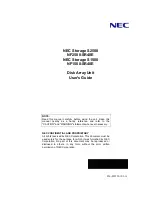
Implementing MLC NAND Flash for Cost-Effective, High-Capacity Memory
91-SR-014-02-8L
8
Overcoming MLC Limitations
Because MLC technology can potentially bring the industry breakthrough cost and size benefits for
local data and code storage, M-Systems chose to take on the challenge of perfecting it by providing
solutions to overcome MLC reliability, performance and flash management limitations.
x2 technology, customized by M-Systems specifically to meet this challenge, is a combination of
algorithms, performance-enhancing innovations and flash management capabilities. Developed in
cooperation with Toshiba, x2 technology is integrated seamlessly into the different modules of M-
Systems’ Mobile DiskOnChip G3 architecture and fully compatible with its TrueFFS technology for
flash management. x2 technology includes reliability and performance improvements integrated into
TrueFFS, the thin controller and the flash media itself, as shown in Figure 3. x2 technology cleverly
balances software and hardware to keep reliability and performance at their peek while maintaining
MLC cost and size benefits.
Figure 3: x2 Technology: Seamless Integration into M-Systems’ Mobile DiskOnChip G3
































